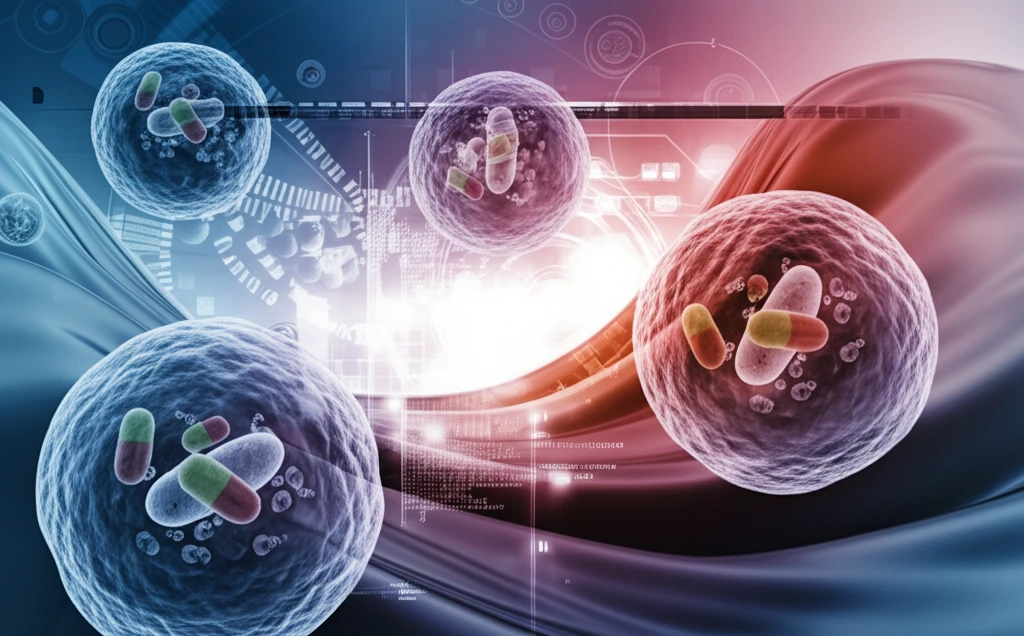
Nanoparticle Imaging: Unveiling the Secrets of Liposomes with Advanced Microscopy Techniques
"A Deep Dive into Transmission Electron Microscopy (TEM) and Its Revolutionary Role in Visualizing Nanoscale Drug Delivery Systems"
In the rapidly evolving field of nanotechnology, liposomes have emerged as promising vehicles for targeted drug delivery and diagnostic applications. These tiny, spherical vesicles, composed of lipid bilayers, can encapsulate and transport therapeutic agents directly to diseased cells, minimizing side effects and maximizing treatment efficacy. However, to fully harness the potential of liposomes, scientists must be able to precisely characterize their size, shape, and internal architecture.
Enter transmission electron microscopy (TEM), a powerful technique that allows researchers to visualize nanoparticles at the atomic level. TEM uses a beam of electrons to illuminate a sample, creating high-resolution images that reveal intricate details of liposome structure. This capability is crucial for optimizing liposome design, understanding drug encapsulation mechanisms, and ensuring the quality and consistency of nanoparticle formulations.
While imaging metal particles using electron microscopy is straightforward due to their high density and stability, visualizing soft material nanoparticles like liposomes requires specialized techniques to preserve their delicate structure. This article explores the cutting-edge methods employed in TEM to image liposomes, including cryo-electron microscopy (cryo-EM) and negative staining TEM, and discusses their respective advantages and limitations.
Advanced TEM Techniques for Liposome Imaging

Transmission electron microscopy (TEM) is invaluable for characterizing the size and shape of nanoparticles, offering direct visualization of individual particles and their internal architecture. When imaging soft materials like liposomes, preserving their structure is essential. Cryo-electron microscopy (cryo-EM) is the best method for visualizing liposomes close to their native structure. In cryo-EM, thin films of suspensions are rapidly frozen to create vitrified ice films, which are then imaged directly in the electron microscope at liquid nitrogen temperatures.
- Cryo-Electron Microscopy (Cryo-EM): Best for preserving native structure, involves rapid freezing and imaging at cryogenic temperatures.
- Negative Staining TEM: Faster and simpler, uses heavy metal salts for contrast but may introduce artifacts.
- Freeze Fracture: Useful for larger liposomes, involves fracturing the sample and metal shadowing.
- Atomic Force Microscopy (AFM): Provides complementary information on liposome structure and mechanical properties.
The Future of Liposome Imaging
As nanotechnology continues to advance, the demand for high-resolution imaging techniques will only increase. Cryo-EM, with its ability to visualize liposomes in their native state, is poised to become the gold standard for liposome characterization. Ongoing developments in TEM technology, such as improved detectors and automated data acquisition, are further enhancing the capabilities of liposome imaging. These advancements will not only deepen our understanding of liposome structure and function but also accelerate the development of more effective and targeted drug delivery systems for a wide range of diseases.
